Posts Tagged Sonoma County
Spring Fever? Check Out These Flower Bed Ideas!
Unlike that bad cold you had back in grade school, spring fever is something that you might actually want to catch. You know that you have spring fever if you’ve been planning out flower bed ideas and anxiously eyeing your garden for signs that you can start planting.
From annuals and pair bulbs to spring containers and early bloomers like petite flowers, there are steps that you can start taking today to make that spring fever work for you. The best place to start might be spring-blooming bulbs like daffodils and hardier annuals.
Think Daffodils, Snapdragon, Stock Flowers, Sweet Pea and Hyacinth
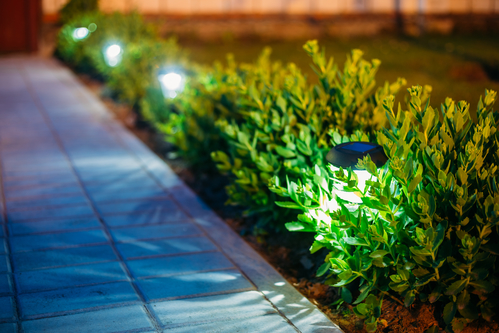
Hardy and half-hardy annuals are the way to go right now if you’ve got a green thumb and you can’t manage to set still. Half-hardy annuals like calendula and snapdragon flowers can withstand a light frost or two and add a full palette of color to your early spring garden.
- Calendula and Dianthus Flowers
Calendula flowers are sometimes known as pot marigold flowers and they’re great because they self-seed so that a handful of seeds really does go a long way towards beautifying your garden. And if you’re looking to add some nice clove scents to your garden, you might also want to throw in a few violet-colored dianthus flowers (growable in containers).
- Snapdragons are Very Hardy
If you’re in a climate that gets truly cold even into late winter, what kinds of flower bed ideas would actually be useful? Well, snapdragons are considered one of the toughest winter hardy flowers in the business since they can come back to full blossom even with significantly subzero temperatures.
- Keep Stock Flowers Around
Stock flowers are also fairly hardy, although they do best in spring and tend to wilt somewhat when summer rolls around. Because they have such a wonderful scent, though, you might consider tucking a container full of stock flowers in the back of your summer garden once they’ve started to wilt come late June.
- Daffodils and Hyacinths
Large bulbs with daffodils and hyacinths are always good to plant alongside your winter hardy flowers in early spring for the extra color and variety that they lend to a spring garden. Whereas peonies and lilacs like to bloom later on in the spring season, daffodils and hyacinths can start a little sooner and give you a head start on your summer garden.
Intersperse Flowering Shrubs with Your Flowers
You really want to think about your spring garden as more of a spring garden landscape. You’re going to be bringing together a lot of different colors, textures, and scents to create a full-on experience. Flowering shrubs look great, smell wonderful, and can even offer the partial shade that daffodils and hyacinths sometimes blossom best under.
- Forsythia Bushes
If you’re in a true four-seasons climate that’s more adventurous than tranquil year round, you might want to consider adding a few forsythia bushes to your spring garden landscape. Forsythia bushes are considered early bloomers, so you can expect to see forsythia’s yellow flowers beautifying your backyard oasis in plenty of time for spring.
- Azalea Blossoms
For more temperate climates where the temperature doesn’t get too cold in late winter or early spring, you should definitely check out azalea blossoms. Azalea is a veritable fixture in the Southeast part of the United States because the ubiquitous good weather there provides the partial shade and leaf litter that azaleas need to thrive and reach their potential.
For more flower bed ideas and advice about how to improve the look of your yard, contact us at DK Landscaping. We provide all our clients with maintenance, repair, irrigation and water savings tips.
Top Gardening Trends For 2018 – Create Your Santa Rosa Xeriscape
Santa Rosa Xeriscape – The Way to go!
Water conservation has become a big deal these days in Santa Rosa and in several other cities in California, since the state has been experiencing severe drought conditions in recent years. Here, authorities have been forced to implement specific regulations and water restrictions in order to facilitate the conservation of water throughout the state.
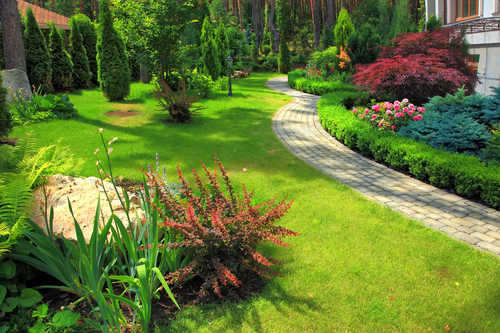
As a result of this many gardeners and landscapers in those areas have had to improvise with their gardening techniques and have been utilizing xeriscaping to keep their gardens in tip-top shape in harsh and limited conditions.
Xeriscaping can bring a whole new meaning to your gardening this year even if the area where you reside is not as dry as others. This technique can help you to save, spend less time watering plants and play your role in conserving water in your district.
FYI – Xeriscapes Make Things Easy For Gardeners Battling Drought
If you live in Santa Rosa or any other city in California that’s drought stricken, then you know that maintaining a healthy and well-nourished garden can be quite the task. Not only because of the harsh and conditions that can exist in some areas but also because of the many issues concerning water conservation.
This is certainly a discouragement for many gardeners as they may fear the worst for their gardens with water regulations being so strict, however there is hope. With your Santa Rosa xeriscape, all your gardening dreams can be made possible and you can still remain compliant with California’s Water Regulations. How?
Well, this particular type of landscaping is specially designed to reduce or eliminate the need for supplemental water to plants, making it easy for gardeners to maintain gardens or landscapes in the scarcity of water. Your Santa Rosa xeriscape does not have to be limited to a single look but can achieve almost any landscaping style conceivable. So whether you have a small garden or are responsible for maintaining a large landscape, using this concept won’t pose any issues with your gardening experience.
Furthermore for your Santa Rosa xeriscape, gardeners can choose from a host of attractive plants that not only show exceptional resilience to harsh conditions but also add variety and appeal to gardens.
Learn How You Can Achieve The Perfect Santa Rosa Xeriscape Following These Easy Steps
The fundamental element of xeriscape design is water conservation, making it the perfect solution for landscape designers who’re constantly searching for ways to reduce the amount water applied to their gardens and to maximize the use of natural precipitation.
Switching to xeriscaping from the more traditional way of landscaping is really quite easy and can be done by any gardener, however, whether you want to redesign an old landscape or create a fresh new, one using xeriscaping, there are a few basic principles that must be followed. These include:
- Planning
To kick off your Santa Rosa xeriscape project, planning is the first thing you should do, where you begin by constructing an aerial view of the site using graph paper, and then marking down North, South, East, and West.
Next, any limiting features such as trees, fences, walkways or structures should be included in plans, noting areas of full sun and full shade to help you to establish areas with different water requirements. You’ll also want to group plants with similar watering needs for most efficient water use.
It is also suggested that gardeners plot areas for seating, walkways, visual barriers, dining or play into plans; carefully constructing a section where larger plantings, such as shrubs and trees can be positioned to provide natural heating and cooling opportunities for adjacent buildings.
Lastly, study the natural contours and drainage patterns of the site to better understand the best or worst location for plants. These contours can be easily developed into terraces, which help to add visual interest and reduce soil loss and erosion.
- Soil Improvement
The next step to creating the perfect Santa Rosa xeriscape would be to improve soil quality on the site. In water-scarce landscapes having the ideal soil conditions does two things: it drains quickly and retains water at the same time. This is achieved by increasing the amount of organic material in your soil and keeping it well aerated.
All you have to do is to purchase some compost from your garden center to help increase the organic matter in your soil, though if you intend to use succulents and cacti in your Santa Rosa xeriscape you may want to work at achieving a leaner soil.
Adding bone meal and rock phosphate to the soil is also another way to boost soil volume and help to improve soil quality, however this is usually done with soils testing a high pH (too alkaline) and low in phosphorus.
- Create Limited Turf Areas
Next, you will need to reduce the size of turf areas as much as possible while retaining an area for open space, functionality and visual appeal. If you intend to plant new turf or reseed an existing lawn, it may be sensible to purchase water-saving species plants adapted to your area from your garden center. This brings us to our next step.
- Use Appropriate Plants
For gardeners to achieve the best results with their Santa Rosa xeriscape, they should select drought-resistant plants native to their region. The plants selected should have leaves which are small, thick, glossy, silver-grey or fuzzy – all characteristics which help them save water. It is also important to choose plants for their ultimate size which will reduce the need for pruning maintenance, especially in hot and dry areas.
Keep in mind to place plants along North and East-facing slopes and walls, that like more moisture but most importantly, it’s best not to mix plants with high and low-watering needs in the same planting area.
- Mulch
Most seasoned gardeners already know that mulching is a great way to promote healthy blooms and landscapes as it helps to retain moisture in the soil, prevent erosion and block troublesome weeds.
With xeriscaping, mulching is also another important aspect of the process and serves basically the same purpose that it would in any other garden. Mulch, such as leaves, wood chips, pine needles or bark should be used and placed to dress the top of soil on occasion, however, for the best results make sure that mulch is at least 3 inches thick and no areas of bare soil are left out.
- Installing Low Drip Irrigation
One of the main purposes of creating a xeriscape is to conserve water and to better facilitate gardens situated in inhospitable areas. Finding efficient ways in which plants can receive the water they need without overwatering can be a bit tricky but by installing a low drip or low volume irrigation system you can certainly pull it off.
This method offers the easiest and most efficient way to supply water just because it delivers water directly to the base of the plant. It also reduces moisture loss, pooling, erosion and is generally the best option when watering plants less frequently.
- Keep Landscapes Well Maintained
Low-maintenance is one of the many benefits of xeriscape, in fact it’s how it got its name; Where the word ‘zero-scaping’, was later substituted with ‘xeriscape’, referring to a landscape that requires zero maintenance.
Although preventing weed growth may require some attention there’s not much for gardeners to maintain when they decide to utilize this form of landscaping. Nevertheless redressing mulch on occasion and cutting turf areas moderately to allow shade for the roots can all be done from time to time to keep your Santa Rosa Xeriscape fresh and healthy.
Get Help Constructing Your Santa Rosa Xeriscape From Scratch – Look Us Up At DK Landscaping Inc. – We’re The Best At Xeriscapes
Following tips can be one thing but when undertaking large gardening projects such as these most people will require an extra hand. Don’t get injured working without the necessary tools or spend long periods of time trying to get projects completed, call the professionals at DK Landscaping.
Producing some of the best Santa Rosa xeriscapes, we strive to incorporate creativity, professionalism and hard work into one service at a fair and affordable price.
We can help you to plan and develop the perfect xeriscape, whether it be residential or commercial. With our xeriscaping services, we offer clients assistance by helping them to choose the right plants, slope sites, mulch areas and install irrigation, this way they can avoid the hassle and save money.
Contact us today at (707) 280-3632 to get started creating your Santa Rosa xeriscape or visit our website at dklandscaping.com for more information on our services.
Useful Tips For Watering Your Garden
A consistent supply of water plays an integral role in the nurturing and maintenance of trees, crops, plants and flowers on a daily basis. Nevertheless when it comes to supplying a garden with water most people believe that so long as plants are watered all is well. Unfortunately this may not necessarily be true as there are many factors that affect the way trees, plants and flowers receive water. With that said here are a few insightful tips for watering gardens that gardeners can utilize in order to maximize the amount of water their plants, trees and flowers receive.
Mulching Improves Water Retention In Gardens

Even though insufficient water can be harmful to trees, plants or flowers an excessive supply of water can practically have the same effect. So it would be safe to say that not only do gardens need a consistent supply of water to stay well maintained but they need accurately, proportioned, amounts as well.
It may seem like somewhat of a challenge to actually estimate what constitutes the the correct proportion of water that should be supplied to a garden. Even though there is not really a standard way to gauge this there are some methods gardeners can apply to make sure plants always have the water they need.
Mulching is a very effective gardening method that helps gardeners to reduce the excessive watering of gardens. This method also helps to improve water retention and soil structure so that plants don’t constantly need to be watered.
Test Soil Regularly To Eliminate Unnecessary Watering Of Gardens
Disproportionately watering gardens tends to not only be a wasteful practice but it also causes gardeners to work more than necessary. Therefore gardeners should make it a practice to conduct regular tests on soil to determine whether or not plants need an immediate supply of water.
The best way to do this is to take a spade and push it deep into the soil. Once you pull the spade out check to see if it’s damp or dry which should give you an idea of if it’s time to water or not.
Remember though if you have clay soil it may feel damp whether it’s irrigated or not and sandy soil can feel dry even if it’s wet. So in cases like these gardeners should watch plants for when they start to show signs of water stress to determine when water should be supplied.
Some Mechanisms Can Provide An Adequate And Timely Water Supply To Gardens
Over time gardeners have taken advantage of the availability of certain tools that can help to effectively manage the water supply to their gardens. Some of these tools include automated irrigation and sprinkler systems which can not only minimize the time spent watering gardens but they can adequately supply water to plants at the required time.
Need Help With Irrigation Or Sprinkler Installation? Let DK Landscaping Manage The Job For You!
Are you are interested in installing an irrigation or sprinkler system in your garden but don’t know what to? Well not to worry here at DK Landscaping Inc. we specialize in all your landscaping and gardening services and we’d be happy to come in and complete the installation for you.
Striving to provide the highest, quality, services to all clients we offer extremely affordable rates and we work with clients to manage any type of gardening environment. So give us a call at: 707 280-3632 or visit our website:dklandscaping.com for more information.
Useful Gardening Tips That Promote Healthy Landscapes
As a gardener or landscaper maintaining beautiful surroundings and healthy plants is certainly an important priority and even though this may sometimes be challenging it is necessary if landscapes are to remain healthy and attractive. You want your friends and family to have fun in a garden that is full of life and energy and good maintenance is the key. There are several useful tips that gardeners can apply in effort to promote healthy landscapes and gardens.
Excellent Soil Quality is Vital in Maintaining Healthy Landscapes

Good soil quality is extremely important if plants and trees are to grow healthy and to their full potential. If you discover that your plants, trees or flowers are not thriving this may be due to poor soil quality however one approach that has proven to improve and maintain the quality of soil is the use of fertilizer.
Fertilizer can come in several forms and is an excellent way to enrich soil and promote plant growth. One of the most common forms of fertilizer used throughout gardens and landscapes is organic fertilizer.
Essentially organic fertilizer consist of naturally bio-degradable materials mainly in the form of animal manure but can also be other natural ingredients. It is great for gardens and crops as it not only restores soil quality but improves the long term health of soil promoting healthy landscapes overall..
Mulching Promotes Healthy Landscapes and Gardens
In looking for great ways to promote healthy landscapes and gardens another very useful tip gardeners can utilize is the application of mulch to garden beds and other landscape areas. Generally mulch is used to eliminate weeds, protect and stabilize plants and trees as well as to help soil retain moisture.
Mainly consisting of several, different, materials including chopped leaves, straw, grass clippings, wood chips,sawdust, shredded bark, gravel or stone mulch can be used in vegetable gardens, flower beds, plant pots, around trees, walkway areas, hedges and more.
Among many common gardening techniques the use of mulch has been found to be an easy, environmentally friendly way to promote healthy landscapes and gardens.
Proficient Irrigation Systems Help Promote Healthy Landscapes
In order for gardens or landscapes to remain lush and healthy having an adequate water supply is very important. So a great way to ensure that plants are properly supplied with water is by installing an irrigation system that provides a precise and timely supply of water to landscapes and gardens.
An irrigation system basically obtains water from a source and distributes it equally and uniformly to specific areas throughout gardens. Different kinds of irrigation used include high or micro flow irrigation, in-ground irrigation and automatic irrigation systems.
Over time irrigation methods have improved to better manage different types of gardening done so depending on what type of gardening you do installing the appropriate irrigation system is the best way to ensure gardens and landscapes receive the water they require.
Need Help With Your Landscaping?
Here at Dk Landscaping Inc. we aim to provide the highest quality landscaping and gardening services to clients. Our dedicated team works with clients to manage any type of gardening or landscape services you may need. Whether it be mulching, pruning, irrigation or even planting with affordable rates and great service we’d be happy to come in and assist. Contact us for more information.
Improving the Landscape of Narrow Walkways
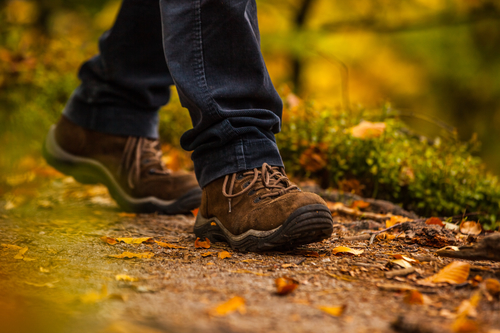 Are you a garden enthusiast who is always looking for ways to enhance your surroundings? Well if you are they’re quite a few simple things you can do to uplift and make a few improvements. Let’s take for instance landscapes that have narrow walkways within their perimeter.
Are you a garden enthusiast who is always looking for ways to enhance your surroundings? Well if you are they’re quite a few simple things you can do to uplift and make a few improvements. Let’s take for instance landscapes that have narrow walkways within their perimeter.
Gardens or outdoor landscapes are set up in such a way that there are certain areas designated for the location of plants, trees and blooms as well as other areas that facilitate the movement of traffic throughout the surroundings known as paths or walkways.
Narrow Walkways can Pose Certain Issues in Landscapes
The main purpose of having walkways throughout gardens is to provide a specified area for persons to travel without causing damage to lawns or blooms. Nevertheless over time some people have used walkways to decorate or add additional character to their outdoor surroundings.
In most landscapes the size of trees or the number of plants increase after a while which can eventually result in smaller more narrow walkways. This can decrease walking space in gardens which can eventually lead to the damage of trees, lawns, plants or flowers.
Over time walkways could incur certain damage causing them get narrow. Some can be a result of the outdoor elements mainly rain or snow or others could be a result of physical or structural damage. Nevertheless regardless of how damaged is sustained its obvious that repair will be necessary to restore walkways to what they should be.
Perhaps a bit of mortar could be used to reconstruct damaged areas or you may have to redesign the entire walkway depending on the extent of the damage but be sure to cover garden beds with tarpaulin to protect the plants you intend to keep.
Increased plant growth is also a very common circumstance that can cause narrow walkways to develop. As we are all aware plants compete for space and grow continually in ideal conditions which can sometimes present certain issues if they’re not properly maintained.
In cases like this plant overgrowth tends to invade areas designated for walking resulting in narrow walkways. Projecting tree branches, overgrown lawns, weeds etc. can all affect the space available to walk so by utilizing pruning and other maintenance techniques gardeners can control plant growth in gardens to maintain adequate space and eliminate narrow walkways.
Plants That Boost Appearance
For people residing in urban areas the best plants to use are low-growing perennials. Besides their beautiful shades most of them die in the winter or can be cut to the ground. Making it easy for gardeners during winter and the upcoming growing season.
The Lysimachia nummularia species possesses a delicate looking foliage that covers ground quickly and softens the edges of a path and using slightly taller plants in landscapes would also prove sensible as they won’t bend into the path creating narrow walkways. In addition to this they will add a contrasting feature to the surroundings.
Need Help With A Narrow Walkway? DK Landscaping Inc. Us Here To Help!
Here at DK Landscaping Inc. we specialize in all your landscaping needs and aim to provide the highest quality services to clients at an affordable price. If you may need assistance repairing, restoring or improving a narrow walkway we’d be happy to come in and give you a hand. Give us a call at 707 217-6508 or contact us via our website.
Effective Gardening Tips Part 2 – Which Type of Irrigation is Best
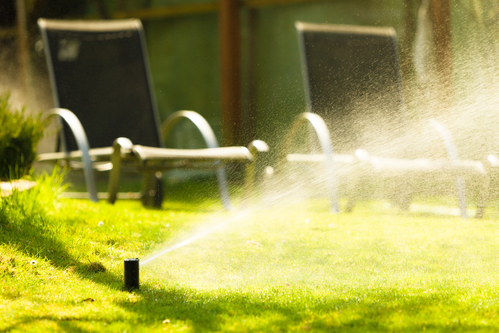 If you are a gardener, farmer or even a landscaper you understand the necessity of supplying your plants, gardens or crops with adequate water. Normally most gardeners use hoses or watering cans to water gardens but this is not always as effective because sometimes enough water might not penetrate the soil. In addition it might not be sufficient to supply what plants really require. An effective way to tackle issues such as this is to install an irrigation system which will properly supply gardens or crops with an adequate and timely supply of water.
If you are a gardener, farmer or even a landscaper you understand the necessity of supplying your plants, gardens or crops with adequate water. Normally most gardeners use hoses or watering cans to water gardens but this is not always as effective because sometimes enough water might not penetrate the soil. In addition it might not be sufficient to supply what plants really require. An effective way to tackle issues such as this is to install an irrigation system which will properly supply gardens or crops with an adequate and timely supply of water.
Different Types
The basic concept of an irrigation system mainly entails water being obtained from a source and distributed in specific amounts equally and uniformly to each plant or crop. Different kinds used include high or micro flow irrigation, sub-irrigation, in-ground irrigation, localized irrigation and even automatic irrigation systems.
The systems mentioned are all utilized to best suit their specific purpose however the two most commonly used are the high flow and low flow irrigation systems. The first system delivers water to plants with a high flow while the latter operates with a low flow or drip.
Use A System That Best Suits Your Garden
If you are a farmer cultivating crops on agricultural land then the high flowing system would be more appropriate. With this type high water levels are used to flood and control the amount of water in each distinct field. It is also regulated by a series of slopes that enables a runoff of excess water.
With the low flowing or drip irrigation system water is transported and distributed to plants through emitters, mini rotors, micro sprays or drip lines in a dripping fashion delivering water directly to roots. Seen as a very efficient method, low flow irrigation utilizes less water and significantly reduces evaporation and runoff.
Over time methods have improved to better manage the different types of gardening done today so depending on the type of gardening that you practice, installing the type that is appropriate is the best way to ensure that plants or crops receive the water that they require.
We’re Here To Help!
If you are interested in installing an irrigation system in your garden but you don’t know what to do leave it to us we can come and install it for you. Here at Dk Landscaping Inc. we aim to provide the highest quality landscape and gardening services to clients. Our services are very affordable and we work with clients to manage any type of gardening environment give us a call at 707 217-6508 or contact us via email.
How To Winterize Your Drip Irrigation System
Leaving a drip irrigation system in its natural state during the winter is a mistake. Be proactive and winterize your drip irrigation system with the methods outlined below. These winterization methods will safeguard your drip irrigation system, protecting your investment as well as your property. If you fail to properly winterize your drip irrigation system, the system’s valves, plastic fittings, poly pipe, filters, PVC pipe or layflat hoses might burst as a result of water freezing inside. Even the main water lines can be damaged if you fail to winterize. It will take an hour or less to winterize your system. Here is how to do it.
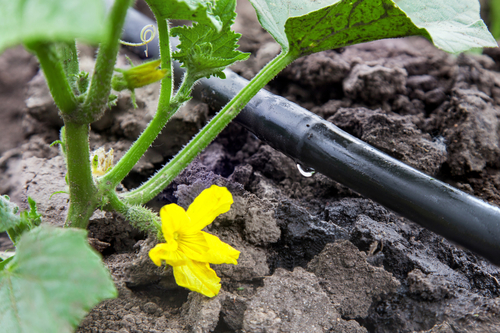
A Helpful Preventative Measure for Drip Irrigation Systems
One of the best ways to prevent freezing in your drip irrigation system is to install automatic drain valves. Position them at the lowest possible point within the system. Drain valves allow water within the line to drain out. Some experts also recommend running chlorine (2 PPM) into the system and flushing it out thoroughly for a comprehensive clean ahead of the winter.
The First Step
Begin by turning off the main water supply to the drip irrigation system. Do this the day before freezing weather arrives. Make sure that there is no water in the backflow device, filter, valves, drip hose, sprinklers, pipe and pressure regulator. Run the controller/timer through its regular watering cycle. This allows each valve to open. Water pressure is relieved from the valves as well as the main line. Let the lines drain.
If the spring-loaded drain valves toward the system’s end are not properly installed, the main line might not fully drain. In some instances, the ground is not completely flat or the drain valve is positioned toward the bottom of the system. If you have any doubt as to whether the main line is drained, make use of air pressure to fully flush out the system.
Drip Tubing/Micro Tubing
Start out by disconnecting the drip tubing with the filter assembly’s swivel adapter. Wrap this piece to the filter assembly so grime doesn’t reach the drip tubing. If your drip tubing is above ground, open each end to permit the draining of water. Lift the hose a couple feet at a time so water can drain out. Once the water drains, close the drip tubing ends.
Irrigation Valve Assemblies
If your system makes use of AC valves with a pressure regulator and filter or battery operated controllers, consider storing them inside a warm area during the cold months of the year. If you can easily remove the full assembly from the pipe, you can store this assembly unit all the way from the pressure regulator to the controller indoors for the winter. If separating the valve assembly or filter assembly is not feasible, loosen or remove the valve bonnet to ensure the water from the upper portion of the diaphragm and filter cap can drain.
How to Proceed Through the Duration of the Winter
Leave the system in the “off” position and fully drained throughout the duration of the winter. If you decide to water your plants, yard or other items on your property, use your hose. In most instances, there is ample moisture within the ground to sustain your greenery until spring.
We’re Here to Help With Everything Irrigation-Related
If you have any questions about how to winterize your drip irrigation system, reach out to our landscape maintenance company. We specialize in irrigation and water saving landscape design. Put your faith in our irrigation experts and we will improve the beauty, integrity and utility of your property. Contact us the experts for more information.
Different Kinds of Irrigation Systems
If you are a farmer, gardener or even a landscaper you probably know how important it is to have an irrigation system installed to supply your plants, gardens or crops with water. Most irrigation systems are used during dry seasons when rainfall is scarce but since there are several types of irrigation it would be important for persons to identify which type would best serve their needs.
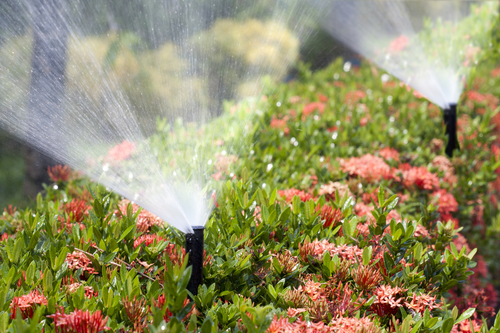
Lets Look At irrigation Systems
Irrigation techniques may differ in several ways but the basic concept of the system is that water is obtained from a source and is distributed to plants or crops. Generally the aim of the system is to equally and uniformly distribute specific amounts of water to each plant or crop.
Types of irrigation used include high or micro flow irrigation, sub-irrigation, in-ground irrigation, localized irrigation and even automatic irrigation systems. They are all utilized to best suit their specific purpose however the two, most, commonly, used systems are the high flow or micro flow irrigation systems.
With these two main types of irrigation systems one releases water with a high flow and the other distributes water with a low flow or a drip. The high flowing system operates so that water spreads heavily across the surface of the specified area, in order to wet and infiltrate into the soil and the low flowing system functions so that water falls in a dripping fashion and is delivered directly at the position of roots.
The high flowing system is mostly used when irrigating agricultural land. Here water levels that originate from the irrigation source and are used to flood or control the level of water in each distinct field. The flooding system is controlled by dikes which are slopes that help to regulate water levels. This form of irrigation is mostly seen with the cultivation of rice.
The low flowing or drip irrigation system as we know obtains water from a source and transports and delivers it to plants through emitters, mini rotors, micro sprays or drip lines in a dripping fashion where water goes directly to roots.This method has been seen as the most, water-efficient, method, of irrigation as it utilizes less water and once managed properly minimizes evaporation and runoff.
Since drip irrigation systems are the more domestic and commonly used system here are a few tips that can assist persons with operating and maintaining them so that they function as efficiently as possible.
For this type drip lines are most recommended and should be used for continuous rooting as they have flexible tubing containing tiny, water, flow, regulators, for evenly spaced water distribution.
Micro sprays and mini rotors clog easily, and should be regularly maintained. Monthly investigations should be conducted and if necessary repairs or replacements done to ensure there are no irregularities within the system.
Laying out emitters individually can also prove to be an efficient practice as this delivers water exactly where the plant needs. It reduces the amount of weeds produced and eliminates excess, irrelevant water. Persons also need to make sure that their drip system includes pressure reducers and filters as these ensure water is measured accurately and delivered at the specified rate.
Remember that these systems must be designed to prevent runoff, low head drainage and overspray. For more information on irrigation contact us.
Winter Lawn Care Is Essential
Winter lawn care is no less as important as summer lawn care and maintenance. Your winter lawn care to-do list wouldn’t include activities such as trimming, weeding and watering however, care is important if you want your lawn to maintain its healthiness during the upcoming months. Depending on the location of your home you will have to determine the best plants to grow and maintenance methods to use in order to achieve this. If your lawn has weeds to spot-treat you can comply with these winter lawn care techniques.
Winter Lawn Care Techniques
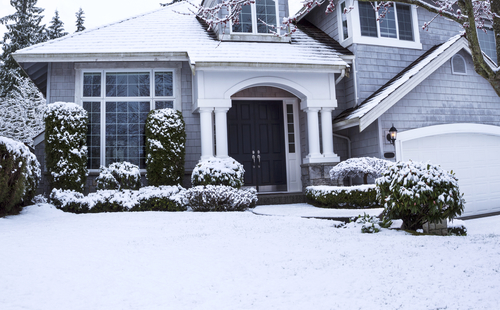
- Firstly, it is important to continue trimming your lawn even during the winter season. Note however, that there are several winter weeds that can’t endure frequent trimming and can die.
- Place a bag attachment onto your mower when trimming in order to capture seeds and prevent germination. In addition consider administering pre-emergent herbicide in the fall.
- Stop walking on your frozen lawn! Continuous walking or driving over a frozen lawn can kill its turfgrass crowns, which can create spring bare spots.
- If you can’t get all the autumn leaves eliminated before snowfall then not to worry as there is a solution for this. If the soil is damp, level it out carefully, as grass can pull up effortlessly. If you leave leaves on the grass during winter it can kill turf crowns. Moreover, they can lead to snow mold which can devastate your entire lawn.
Other Important Facts
Beware of vole trails that can be present in your lawn after snow fall. These mouse-like small creatures can be in both rural and suburban lawns. An abundant covering of snow on your lawn supply voles with the cover needed to devour grass roots in open lawn. this helps them to remain hidden from predators. As the snow liquefies their superficial runways become visible along the lawn veneer. The runways look like a tunnel without a top and soon as the snow softens you should trim your grass to prevent these critters from inhabiting your lawn.
If your lawn is wholesome you can leave out the grass seed. Another way to tackle the intrusion of voles is to obtain an outdoor cat. Contact us for more information and to inquire about our lawn care services.
Winter Landscaping – Its Actually Great For Your Lawn
During the latter time of the year, when the winter months begin to creep in, the outdoors transition into a dull and inhospitable place. All the activity then shifts to the indoors, however, for garden and lawn lovers alike, this is the ideal time to prep your lawns and gardens for the upcoming growing season. These are five easy tips you can consider, to keep your gardens and lawns in good shape during winter. Improve your winter landscaping techniques today!
Winter Landscaping Tips
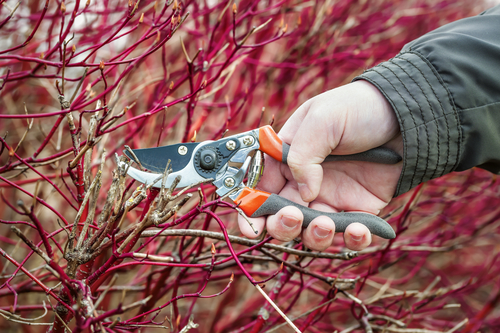
Pruning and trimming is a popular garden practice. This helps to shape, improve and maintain the general health of plants and trees. During the dormant, winter months carrying out these practices, tend to be fairly, popular and is encouraged,as during this time of dormancy, the vast majority of hedges, shrubs and trees, including evergreens and deciduous trees, can be pruned or trimmed, without causing damage to the plant or tree.
Heavy snowfall and high winds, usually come with the seasonal winter storms.Therefore it is recommended, that prior to this time, all high or decayed branches, be pruned or entirely removed. If or when stormy conditions occur, these decayed branches or dead trees can quickly transform into falling hazards, that pose serious threats of injury. With that said, not everyone may be confident enough to carry out pruning or trimming effectively. So we recommend, consulting a local, insured, tree removal service, who will handle all your trimming and pruning needs in a safe, professional and effective manner.
During the fall, leading into winter leaves are constantly falling, covering your garden or lawn from end to end with immense amounts of leaves. Cleaning and maintaining your lawns or gardens at this time, certainly proves to be a daunting task but is also very important. This practice allows your garden beds and lawns, to receive the adequate amounts of sunlight required, for the optimal growth of plants as well as lush healthy lawns.
Another resourceful and efficient tip one can utilize in effort to prep your garden for the upcoming growing season, is getting a head start planting your garden beds. One can begin by pruning all shrubs, trees and perennials.Secondly, clear and remove all leaves and other debris from beds. Afterward, define the edges of beds by hard edging and creating a perimeter pass along the edge, with a lawn mower. Once these steps are completed you can then begin to install your bulbs for spring.
Protecting plants from any damage or destruction, has always been a major concern for most gardeners,with the harsh,winter weather being no exception. A clever tip that has proven effective, to equip gardeners for this extreme period, is the use of mulch. Mulch is used to retain soil moisture, regulate soil temperature, suppress weed growth, serves as an aesthetic and most importantly, acts as a shield against the unfavourable, winter, conditions. Planting beds should be mulched at a depth of 1.5 – 2 inches, to ensure plant roots remain the right temperature as well as to offer the right amount of protection from any potential damage.
Ensuring that you maintain a safe and nurturing environment throughout your garden, should be a priority of every gardener, especially throughout the winter season. This would include tying up loose branches of evergreens and boxwoods,turning off and covering all water spigots, storing away any remaining, organic, chemicals and making sure that irrigation systems are properly winterized. With that said, please remember not to use a broom or shovel while removing snow from branches as they will be frozen, fragile and could easily sustain damage. If in doubt this winter season contact DK Landscaping for more information.





